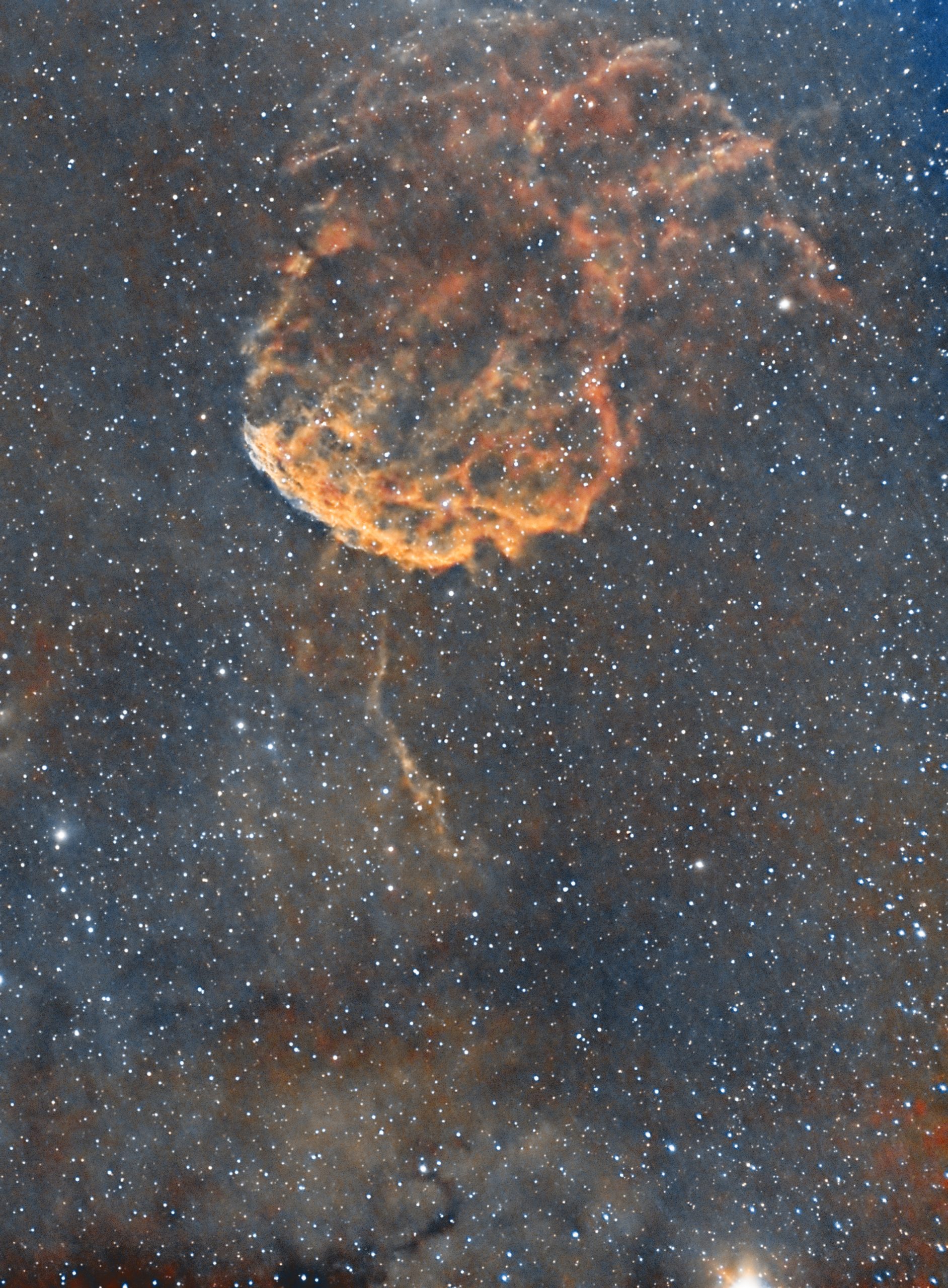Unravelling the Mysteries of the Jellyfish Nebula

A Spectacular Supernova Remnant in the Depths of Space
Welcome to our exploration of IC 443, a fascinating astronomical object commonly known as the Jellyfish Nebula. Located approximately 5,000 light-years away in the constellation Gemini, IC 443 is a spectacular supernova remnant that captivates both astronomers and stargazers alike. Join us as we delve into the celestial wonders of this intriguing nebula and uncover its secrets.:
A Supernova’s Aftermath
IC 443 is the result of a massive star’s explosive death, known as a supernova. This cataclysmic event occurred between 3,000 and 30,000 years ago, leaving behind a complex remnant that continues to expand into the surrounding interstellar medium. The nebula’s characteristic shape, resembling a jellyfish or medusa, is the product of the shockwaves from the supernova interacting with the surrounding gas and dust.
Studying the Jellyfish Nebula
The Jellyfish Nebula provides astronomers with valuable insights into the life cycle of stars, as well as the complex interactions between supernova remnants and the interstellar medium. Observations of IC 443 across various wavelengths, including radio, optical, infrared, and X-ray, have allowed scientists to study its composition, dynamics, and the environment in which it resides.
Key Features of IC 443:
- Filamentary Structure IC 443 exhibits a stunning filamentary structure, with intricate patterns of gas and dust weaving throughout the nebula. These filaments are the result of shockwaves compressing and heating the interstellar material, leading to the emission of light at different wavelengths.
- Pulsar Wind Nebula At the heart of IC 443 lies a pulsar wind nebula powered by a rapidly rotating neutron star – the collapsed core of the progenitor star. This pulsar emits a stream of high-energy particles, which interact with the surrounding magnetic field to create a glowing bubble of X-ray and radio emission.
- Cosmic Ray Acceleration IC 443 is of particular interest to astronomers studying cosmic rays – high-energy particles that originate from outside our solar system. The shockwaves within the nebula are thought to accelerate these particles to nearly the speed of light, providing valuable insights into the origin and propagation of cosmic rays in our galaxy.
Exploring IC 443 Through Astrophotography
The Jellyfish Nebula is a popular target for astrophotographers, who capture its intricate details and vibrant colours using specialized equipment and techniques. Through long-exposure photography and the use of narrowband filters, these talented individuals reveal the hidden beauty of IC 443, inspiring a sense of awe and wonder at the marvels of our universe.
Exploring IC 443 Through Astrophotography
IC 443, the Jellyfish Nebula, is a captivating celestial object that offers a unique window into the aftermath of a supernova and the dynamic processes shaping our galaxy. As astronomers continue to study this enigmatic nebula, we are reminded of the ever-evolving nature of the cosmos and our enduring quest to unravel its mysteries.
